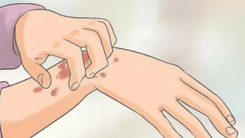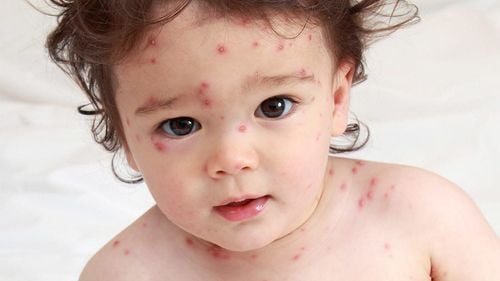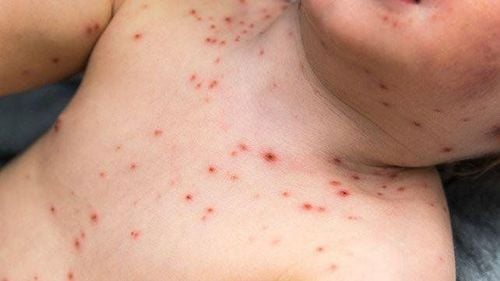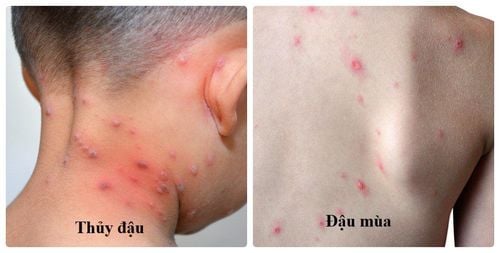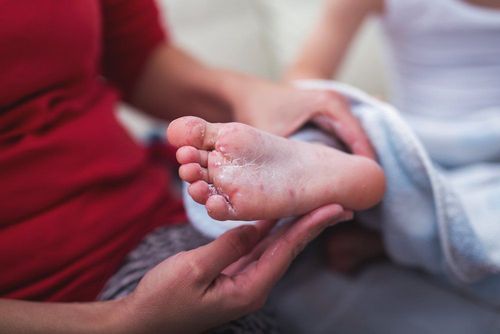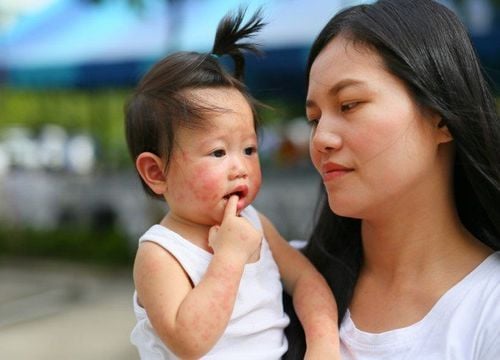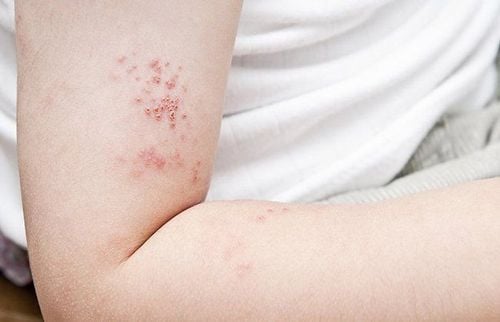Hand, foot, and mouth disease is a condition that commonly occurs during the summer and autumn, coinciding with other skin conditions and skin lesions in the form of blisters, so it is necessary to differentiate it from diseases caused by Herpes simplex virus infection or chickenpox and shingles.
1. Distinguishing hand, foot, and mouth disease from chickenpox, shingles (herpes zoster), and Herpes simplex
1.1 Hand, Foot, and Mouth Disease
Hand, foot, and mouth disease is caused by viruses belonging to the enterovirus group (such as poliovirus, coxsackievirus, echovirus…). The peak of outbreaks typically occurs from March to May and September to November. The disease mainly affects children under the age of 10.
When a child has hand, foot, and mouth disease, they will develop oval-shaped blisters that appear in typical locations such as the palms of the hands, soles of the feet, elbows, knees, and buttocks. Blisters may also appear in the mouth and throat, causing mouth and throat ulcers. However, these blisters are not itchy or painful.
1.2 Chickenpox
Chickenpox is caused by a virus called Varicella Zoster Virus (VZV) and is highly contagious. The disease can occur year-round, but the peak period is from February to June. It primarily affects children aged 5-11 years, but adults can also contract the disease.
When a person has chickenpox, the rash develops in stages, beginning on the torso and then spreading to the entire body, including the head, face, arms, and legs. Older blisters intermingle with newer ones, with central depressions when they first appear, filled with clear or cloudy fluid (pus) due to bacterial infection. The rash causes itching, pain, and discomfort.
In addition to the blisters, young children usually experience mild fever and loss of appetite, but older children and adults often experience high fever, headache, muscle aches, and vomiting. After the illness subsides, the rash will dry up, scab over, and darken where the blisters were, leaving no scars if not infected.
1.3 Shingles (Herpes Zoster)
Shingles, also known as herpes zoster, is caused by a virus and only occurs in people who have had chickenpox previously. Shingles does not typically cause widespread outbreaks like chickenpox or hand, foot, and mouth disease but is more common in people with weakened immune systems.
When a person develops shingles, they experience burning pain in a specific area of the skin, followed by the appearance of small, clustered blisters. These blisters usually appear on one side of the body and rarely spread to other areas of skin. The blisters can range from mild to severe in pain, depending on the case. If blisters form in the armpits, groin, or neck, swollen lymph nodes and mild fever and fatigue may also occur.
1.4 Herpes Simplex
Herpes Simplex Virus (HSV) comes in two types: HSV-1 and HSV-2, and the infection recurs in outbreaks.
- HSV-1: It causes cold sores around the mouth, lips, and eyes, and in some cases, genital herpes. People with HSV-1 often experience itching and a hot, burning sensation around the mouth before the sores appear. Once the blisters rupture, they leave open sores or deep ulcers that scab over or ooze fluid, causing unsightliness.
- HSV-2: It causes sores around the genital or anal area and is primarily transmitted through sexual contact. The most common symptoms of HSV-2 include the appearance of sores in the genital or anal area. In addition to the sores, symptoms may include fever, body aches, and swollen lymph nodes.
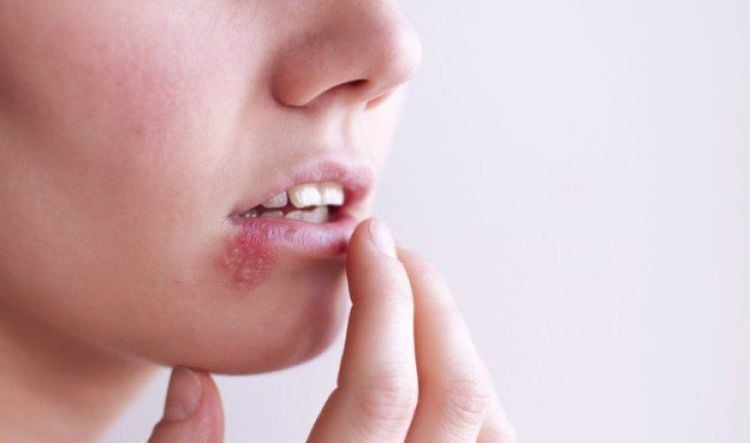
2. Treatment of hand, foot, and mouth disease, chickenpox, shingles (herpes zoster), and Herpes simplex
2.1 Treatment for Hand, Foot, and Mouth Disease
Currently, there is no specific medication to treat hand, foot, and mouth disease. Treatment primarily focuses on reducing fever, alleviating pain, and strengthening the immune system.
- Use pain relievers and fever reducers like Paracetamol or Acetaminophen. Avoid Aspirin or any medications containing Aspirin.
- Personal hygiene: Reduce the risk of skin infections by keeping the body clean, having the child gargle daily, taking warm baths, gently cleaning the skin, avoiding rupturing the blisters or scratching, and changing into clean clothes daily. Trim the child’s nails and put gloves on infants to prevent skin damage.
- Nutrition: Ensure the child consumes a nutritious diet, including soft, cool foods, and drink plenty of fluids.
- Seek immediate medical attention if the child shows signs of a more severe illness such as high fever, altered consciousness, seizures, or if blisters become infected with pus or blood.
2.2 Treatment for Chickenpox
Chickenpox typically has a mild course. However, without proper care, it can lead to serious complications, including shingles, also known as herpes zoster. To support the treatment of symptoms and prevent complications, chickenpox treatment should include:
- Medications: Antipyretics, vitamins, and anti-itch ointments, all under the doctor's prescription.
- Hygiene: Regular bathing and cleaning to prevent bacterial infection, avoiding scrubbing the blisters.
- Nutrition: Avoid fatty foods, butter, dairy, cheese, and limit spicy foods and acidic foods like oranges and lemons.
- Avoid exposure to wind and keep the body warm to prevent additional infections, but ensure the person is in a well-ventilated area with fans if the weather is hot to prevent excessive sweating.
2.3 Treatment for Shingles (Herpes Zoster)
Currently, there is no complete cure for shingles, but doctors may prescribe medication to control infection, shorten recovery time, reduce inflammation, and alleviate pain.
- Regularly wash hands with soap, both before and after using the restroom, to avoid scratching the skin. Apply antiseptic ointments to prevent secondary infections, using methylene blue.
- Clean the body with warm water, and gently clean the skin to avoid breaking the blisters.
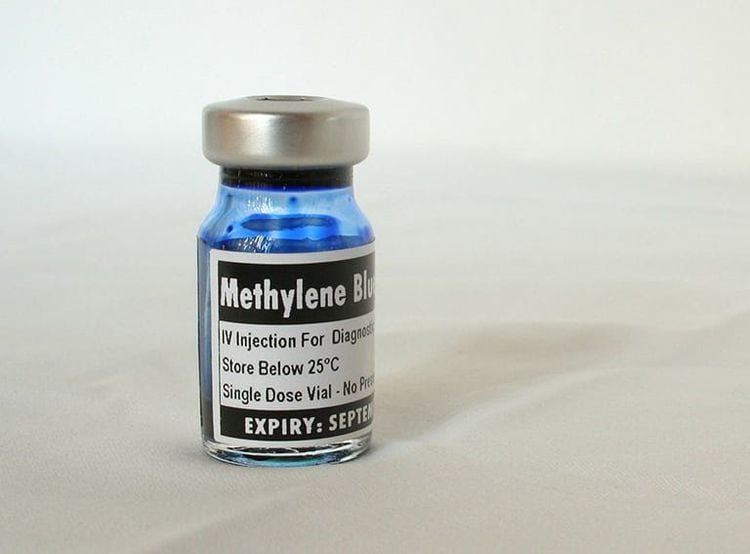
2.4 Treatment for Herpes Simplex
Treatment for herpes simplex mainly focuses on preventing secondary infections, fighting the virus, and providing guidance on the likelihood of recurrence, complications, and preventing transmission to others. Specifically:
- Medications: Antiviral drugs to reduce symptoms. If there is a secondary infection, broad-spectrum antibiotics should be used.
- Nutrition: Strengthen health with a protein-rich diet, vitamins, and appropriate rest.
- Hygiene: Maintain personal hygiene and avoid sharing personal items with others.
3. Prevention of hand, foot, and mouth disease, chickenpox, shingles (herpes zoster), and Herpes simplex
3.1 Prevention of Hand, Foot, and Mouth Disease
Currently, there is no vaccine or specific method to prevent hand, foot, and mouth disease. Preventive measures include:
- Frequently washing hands with soap and running water.
- Ensure safe food and water consumption to maintain hygiene.
- Do not feed food to children by mouth, especially avoid letting children eat by hand, suck their thumbs, or put toys in their mouths.
- Ensure children have separate personal items.
- Maintain cleanliness and ventilation in homes.
- Use sanitary toilets.
- If a child shows signs of suspected illness, parents should take the child to see a doctor or notify the nearest healthcare facility.
3.2 Prevention of Chickenpox
- The best way to prevent chickenpox is through vaccination, which helps the body develop antibodies against the chickenpox virus. The protection provided by the chickenpox vaccine is long-lasting.
- Additionally, frequent handwashing, regular cleaning of the body, home, and personal items is recommended.
- Avoid places with outbreaks of the disease.
3.3 Prevention of Shingles
- Frequent handwashing, regular cleaning of homes, and personal items is advised.
- Maintain a balanced diet, rest, and avoid stress and exhaustion
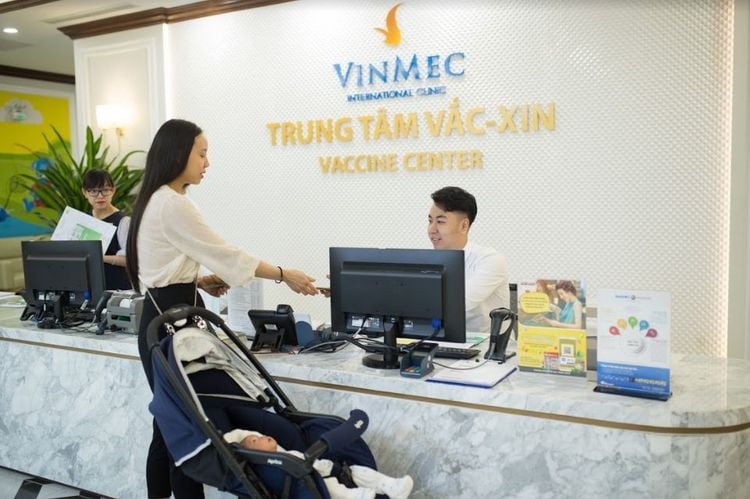
3.4 Prevention of Herpes Simplex
- Do not share personal items with others.
- Practice safe and healthy sexual behavior, and get vaccinated to prevent sexually transmitted infections.
- Limit intimate behaviors such as hugging, kissing, holding hands, or touching open wounds.
- Clean genital areas properly and appropriately.
Please dial HOTLINE for more information or register for an appointment HERE. Download MyVinmec app to make appointments faster and to manage your bookings easily.



